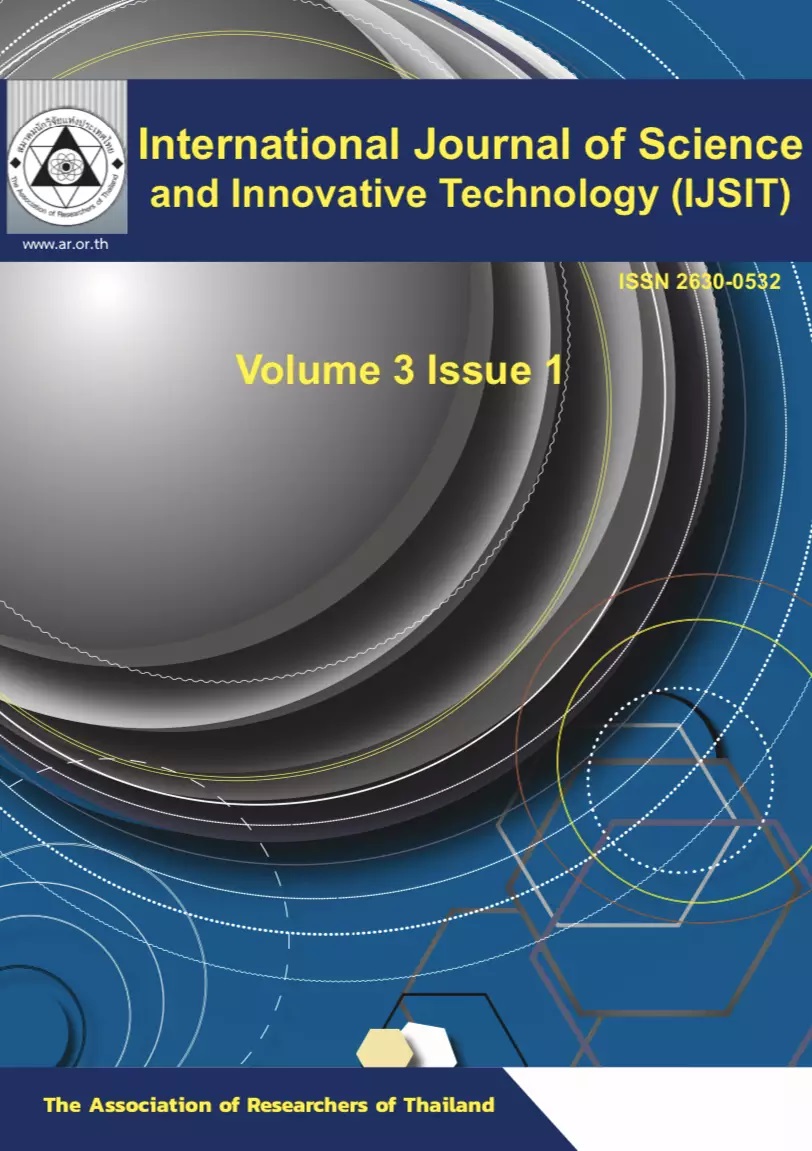The role of wild pollinators enhancing the sustainable productivity and quality of arabica coffee in agroforestry
Main Article Content
Abstract
Crop, coffee, productivity and quality, in this study, was conducted at Ban Khun Lao, Chiang Rai Province and investigated the impact of pollination services. The different pollinations were compared between autogamy, wind pollination, and open pollination on various parameters following: fertilisation ratio, fruit set, cherry weight, ripening uniformity. Among these, open pollination was recorded at the significantly highest results. Data on weight of green beans and total yield exhibited clearly that open pollination were heavier than on wind pollination and autogamy. In addition, the taste and aroma of given coffee from open pollination were honey, caramelised and jasmine which navigated mostly to the sweet and floral. These results indicated that the community and diversity of insect pollinators had the dramatic effectiveness toward the productivity and quality of arabica coffee in organic-agroforestry.
Article Details
References
Karanja, R., Gikungu, M., Njoroge, G., Newton, L. E., & Kihoro, J. M. (2011). Comparison of Bee Pollinators of Coffee in Organic and Conventional Farms. Asian Journal of Agricultural Sciences, 3(6), 469-474.
Karanja, R., Njoroge, G., Gikungu, M., & Newton, L. E. (2014). Pollination Efficiency of Bee Species Pollinating Coffea Arabica in Kiambu County Kenya. Current Research Journal of Biological Sciences, 6, 179-182. doi:10.19026/crjbs.6.5190
Karanja, R., Njoroge, G., Kihoro, J., Gikungu, M., & Newton, L. E. (2013). The Role of Bee Pollinators in Improving Berry Weight and Coffee Cup Quality. Asian Journal of Agricultural Sciences, 5, 52-55. doi:10.19026/ajas.5.4841
Klein, A. M., Dewenter, I. S., & Tscharntke, T. (2003). Bee pollination and fruit set of Coffea arabica and C. canephora (Rubiaceae). American Journal of Botany, 90(1), 153-157.
Krishnan, S., Kushalappa, C. G., Shaanker, R. U., & Ghazoul, J. (2012). Status of pollinators and their efficiency in coffee fruit set in a fragmented landscape mosaic in South India. Basic and Applied Ecology, 13(3), 277-285. doi:https://dx.doi.org/10.1016/j.baae.2012.03.007
Ngo, H. T., Mojica, A. C., & Packer, L. (2011). Coffee plant – pollinator interactions: a review. Canadian Journal of Zoology, 89(8), 647-660. doi:10.1139/z11-028
Ricketts, T., Daily, G., Ehrlich, P., & Michener, C. (2004). Economic value of forest to coffee production. Proceedings of the National Academy of Sciences of the United States of America, 101, 12579-12582. doi:10.1073/pnas.0405147101
Roubik, D. W. (2002). The value of bees to the coffee harvest. Nature, 417, 708.
Smith, D. J. (2010). Agroforestry: Reconciling Production with Protection of the Environment. The Organic Research Centre, 5.
Vergara, C. H., & Badano, E. I. (2009). Pollinator diversity increases fruit production in Mexican coffee plantations: The importance of rustic management systems. Agriculture, Ecosystems & Environment, 129(1–3), 117-123. doi:https://dx.doi.org/10.1016/j.agee.2008.08.001
Wissarut, S., Phawini, K., Dumrongpon, D., & Duangthip, K. (2017, August 22nd-24th). Diversity of insect fauna and pollinators in organic arabica coffee plantation at Ban Khun Lao, Chiang Rai province, the north of Thailand. Paper presented at the ASEAN+6 Organic Agriculture Forum 2017, Balios Resort Khaoyai, Nakhon Ratchasima, Thailand.


